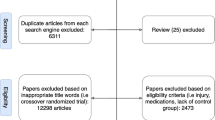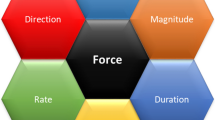Abstract
Quantification of muscle moment arms is important for clinical evaluation of muscle pathology and treatment, and for estimating muscle and joint forces in musculoskeletal models. Moment arms estimated with musculoskeletal models often assume a default motion of the knee derived from measurements of passive cadaveric flexion. However, knee kinematics are unique to each person and activity. The objective of this study was to estimate moment arms of the knee muscles with in vivo subject- and activity-specific kinematics from seven healthy subjects performing seated knee extension and single-leg lunge to show changes between subjects and activities. 3D knee motion was measured with a high-speed stereo-radiography system. Moment arms of ten muscles were estimated in OpenSim by replacing the default knee motion with in vivo measurements. Estimated inter-subject moment arm variability was similar to previously reported in vitro measurements. RMS deviations up to 9.0 mm (35.2% of peak value) were observed between moment arms estimated with subject-specific knee extension and passive cadaveric motion. The degrees of freedom that most impacted inter-activity differences were superior/inferior and anterior/posterior translations. Musculoskeletal simulations used to estimate in vivo muscle forces and joint loads may provide significantly different results when subject- and activity-specific kinematics are implemented.







Similar content being viewed by others
References
An, K. N., K. Takahashi, T. P. Harrigan, and E. Y. Chao. Determination of muscle orientations and moment arms. J. Biomech. Eng. 106:280–282, 1984.
Arnold, A. S., S. Salinas, D. J. Asakawa, and S. L. Delp. Accuracy of muscle moment arms estimated from MRI-based musculoskeletal models of the lower extremity. Comput. Aided Surg. 5:108–119, 2000.
Arnold, E. M., S. R. Ward, R. L. Lieber, and S. L. Delp. A model of the lower limb for analysis of human movement. Ann. Biomed. Eng. 38:269–279, 2010.
Blemker, S. S., D. S. Asakawa, G. E. Gold, and S. L. Delp. Image-based musculoskeletal modeling: applications, advances, and future opportunities. J. Magn. Reson. Imaging 25:441–451, 2007.
Buford, Jr, W. L., F. M. Ivey, Jr, J. D. Malone, R. M. Patterson, G. L. Peare, D. K. Nguyen, and A. A. Stewart. Muscle balance at the knee–moment arms for the normal knee and the ACL-minus knee. IEEE Trans. Rehabil. Eng. 5:367–379, 1997.
Delp, S. L., F. C. Anderson, A. S. Arnold, P. Loan, A. Habib, C. T. John, E. Guendelman, and D. G. Thelen. OpenSim: open-source software to create and analyze dynamic simulations of movement. IEEE Trans. Biomed. Eng. 54:1940–1950, 2007.
Delp, S. L., J. P. Loan, M. G. Hoy, F. E. Zajac, E. L. Topp, and J. M. Rosen. An interactive graphics-based model of the lower extremity to study orthopaedic surgical procedures. IEEE Trans. Biomed. Eng. 37:757–767, 1990.
Delp, S. L., D. A. Ringwelski, and N. C. Carroll. Transfer of the rectus femoris: effects of transfer site on moment arms about the knee and hip. J. Biomech. 27:1201–1211, 1994.
Gaffney, B. M., M. D. Harris, B. S. Davidson, J. E. Stevens-Lapsley, C. L. Christiansen, and K. B. Shelburne. Multi-joint compensatory effects of unilateral total knee arthroplasty during high-demand tasks. Ann. Biomed. Eng. 44:2529–2541, 2015.
Garner, B. A., and M. G. Pandy. The obstacle-set method for representing muscle paths in musculoskeletal models. Comput. Methods Biomech. Biomed. Eng. 3:1–30, 2000.
Grood, E. S., W. J. Suntay, F. R. Noyes, and D. L. Butler. Biomechanics of the knee-extension exercise. Effect of cutting the anterior cruciate ligament. J. Bone Joint Surg. Am. 66:725–734, 1984.
Hollister, A. M., S. Jatana, A. K. Singh, W. W. Sullivan, and A. G. Lupichuk. The axes of rotation of the knee. Clin. Orthop. Relat. Res. 290:259–268, 1993.
Ito, M., H. Akima, and T. Fukunaga. In vivo moment arm determination using B-mode ultrasonography. J. Biomech. 33:215–218, 2000.
Ivester, J. C., A. J. Cyr, M. D. Harris, M. J. Kulis, P. J. Rullkoetter, and K. B. Shelburne. A reconfigurable high-speed stereo-radiography system for sub-millimeter measurement of in vivo joint kinematics. J. Med. Devices 9:041009, 2015.
Johal, P., A. Williams, P. Wragg, D. Hunt, and W. Gedroyc. Tibio-femoral movement in the living knee. A study of weight bearing and non-weight bearing knee kinematics using ‘interventional’ MRI. J. Biomech. 38:269–276, 2005.
Jorgensen, M. J., W. S. Marras, K. P. Granata, and J. W. Wiand. MRI-derived moment-arms of the female and male spine loading muscles. Clin. Biomech. (Bristol, Avon) 16:182–193, 2001.
Kepple, T. M., A. S. Arnold, S. J. Stanhope, and K. L. Siegel. Assessment of a method to estimate muscle attachments from surface landmarks: a 3D computer graphics approach. J. Biomech. 27:365–371, 1994.
Lafortune, M. A., P. R. Cavanagh, H. J. Sommer, 3rd, and A. Kalenak. Three-dimensional kinematics of the human knee during walking. J. Biomech. 25:347–357, 1992.
Miranda, D. L., J. B. Schwartz, A. C. Loomis, E. L. Brainerd, B. C. Fleming, and J. J. Crisco. Static and dynamic error of a biplanar videoradiography system using marker-based and markerless tracking techniques. J. Biomech. Eng. 133:121002, 2011.
Moissenet, F., L. Cheze, and R. Dumas. A 3D lower limb musculoskeletal model for simultaneous estimation of musculo-tendon, joint contact, ligament and bone forces during gait. J. Biomech. 47:50–58, 2014.
Myers, C. A., P. J. Laz, K. B. Shelburne, and B. S. Davidson. A probabilistic approach to quantify the impact of uncertainty propagation in musculoskeletal simulations. Ann. Biomed. Eng. 43:1098–1111, 2015.
Myers, C. A., M. R. Torry, D. S. Peterson, K. B. Shelburne, J. E. Giphart, J. P. Krong, S. L. Woo, and J. R. Steadman. Measurements of tibiofemoral kinematics during soft and stiff drop landings using biplane fluoroscopy. Am. J. Sports Med. 39:1714–1722, 2011.
Myers, C. A., M. R. Torry, K. B. Shelburne, J. E. Giphart, R. F. LaPrade, S. L. Woo, and J. R. Steadman. In vivo tibiofemoral kinematics during 4 functional tasks of increasing demand using biplane fluoroscopy. Am. J. Sports Med. 40:170–178, 2012.
Navacchia, A., C. A. Myers, P. J. Rullkoetter, and K. B. Shelburne. Prediction of in vivo knee joint loads using a global probabilistic analysis. J. Biomech. Eng. 138:031002, 2016.
Nemeth, G., and H. Ohlsen. Moment arm lengths of trunk muscles to the lumbosacral joint obtained in vivo with computed tomography. Spine (Phila Pa 1976) 11:158–160, 1986.
Pal, S., J. E. Langenderfer, J. Q. Stowe, P. J. Laz, A. J. Petrella, and P. J. Rullkoetter. Probabilistic modeling of knee muscle moment arms: effects of methods, origin-insertion, and kinematic variability. Ann. Biomed. Eng. 35:1632–1642, 2007.
Pandy, M. G. Moment arm of a muscle force. Exerc. Sport Sci. Rev. 27:79–118, 1999.
Rajagopal, A., C. Dembia, M. DeMers, D. Delp, J. Hicks, and S. Delp. Full body musculoskeletal model for muscle-driven simulation of human gait. IEEE Trans. Biomed. Eng. 2016. doi:10.1109/TBME.2016.2586891.
Sancisi, N., and V. Parenti-Castelli. A 1-dof parallel spherical wrist for the modelling of the knee passive motion. Mech. Mach. Theory 45:658–665, 2010.
Sherman, M. A., A. Seth, and S. L. Delp. What is a moment arm? Calculating muscle effectiveness in biomechanical models using generalized coordinates. In: Proceedings of the ASME 2013 International Design Engineering Technical Conferences & Computers and Information in Engineering Conference, Paper No. V07BT10A052, 2013.
Smoger, L. M., C. K. Fitzpatrick, C. W. Clary, A. J. Cyr, L. P. Maletsky, P. J. Rullkoetter, and P. J. Laz. Statistical modeling to characterize relationships between knee anatomy and kinematics. J. Orthop. Res. 33:1620–1630, 2015.
Spoor, C. W., and J. L. van Leeuwen. Knee muscle moment arms from MRI and from tendon travel. J. Biomech. 25:201–206, 1992.
Spoor, C. W., and F. E. Veldpaus. Rigid body motion calculated from spatial co-ordinates of markers. J. Biomech. 13:391–393, 1980.
Thelen, D. G. Adjustment of muscle mechanics model parameters to simulate dynamic contractions in older adults. J. Biomech. Eng. 125:70–77, 2003.
Walker, P. S., J. S. Rovick, and D. D. Robertson. The effects of knee brace hinge design and placement on joint mechanics. J. Biomech. 21:965–974, 1988.
White, S. C., H. J. Yack, and D. A. Winter. A three-dimensional musculoskeletal model for gait analysis. Anatomical variability estimates. J. Biomech. 22:885–893, 1989.
Wilson, D. L., Q. Zhu, J. L. Duerk, J. M. Mansour, K. Kilgore, and P. E. Crago. Estimation of tendon moment arms from three-dimensional magnetic resonance images. Ann. Biomed. Eng. 27:247–256, 1999.
Wu, G., and P. R. Cavanagh. ISB recommendations for standardization in the reporting of kinematic data. J. Biomech. 28:1257–1261, 1995.
Yamaguchi, G. T., and F. E. Zajac. A planar model of the knee joint to characterize the knee extensor mechanism. J. Biomech. 22:1–10, 1989.
Zajac, F. E. Muscle and tendon: properties, models, scaling, and application to biomechanics and motor control. Crit. Rev. Biomed. Eng. 17:359–411, 1989.
Conflict of interest
There are no conflicts of interest to report in the preparation of this manuscript.
Author information
Authors and Affiliations
Corresponding author
Additional information
Associate Editor Michael R. Torry oversaw the review of this article.
Rights and permissions
About this article
Cite this article
Navacchia, A., Kefala, V. & Shelburne, K.B. Dependence of Muscle Moment Arms on In Vivo Three-Dimensional Kinematics of the Knee. Ann Biomed Eng 45, 789–798 (2017). https://doi.org/10.1007/s10439-016-1728-x
Received:
Accepted:
Published:
Issue Date:
DOI: https://doi.org/10.1007/s10439-016-1728-x




